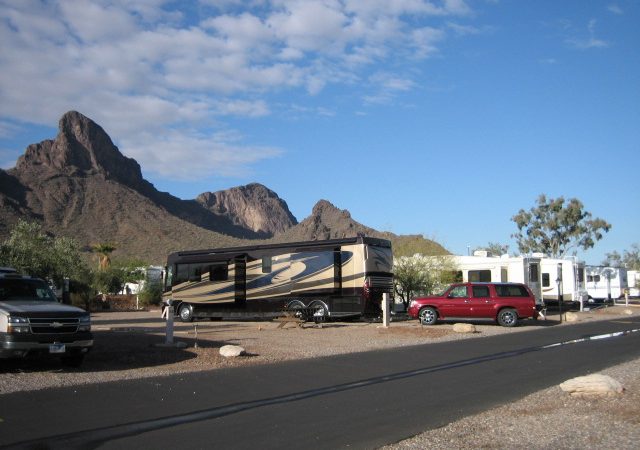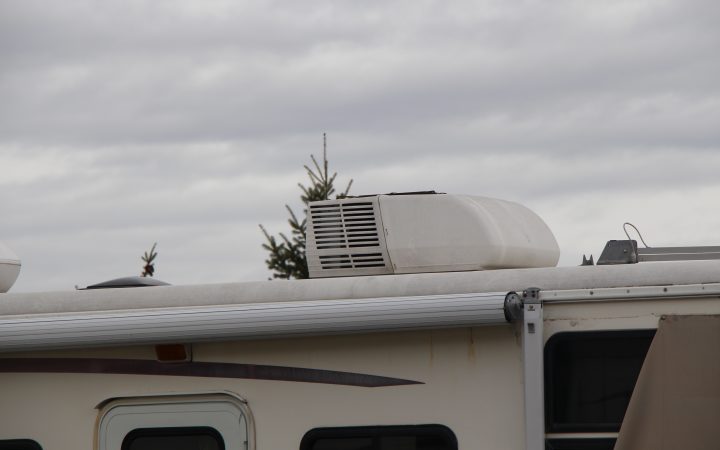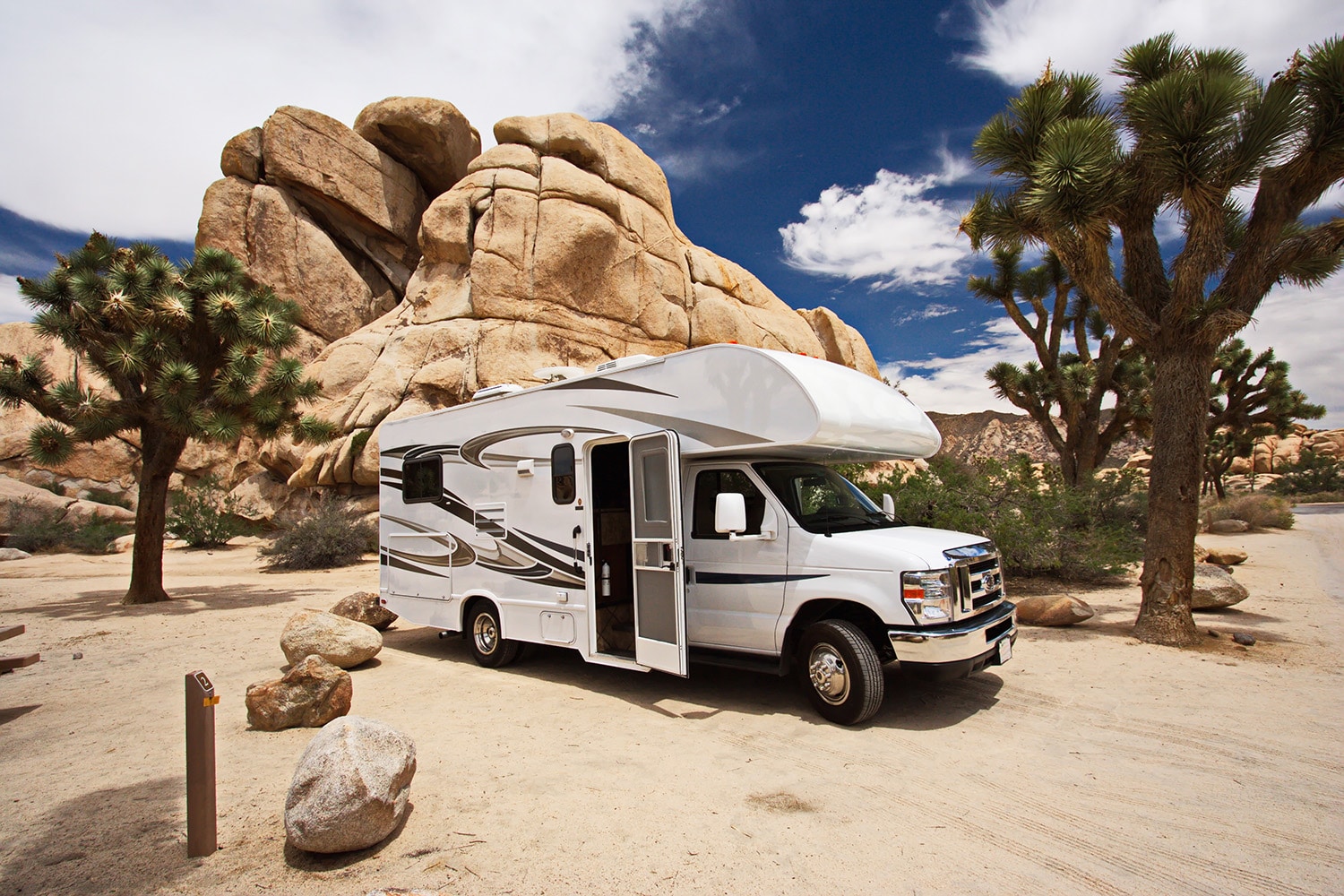WEnRV travel news, products, and industry trends
10 Ways to Keep Your RV Cool as Temperatures Climb
As we move toward another camping season, we relish the healthy lifestyle and fun activities that await. Just getting out and using your RV again can be a rewarding pastime. But along with enjoying the outdoor fun, we need to also relax in the comfort of our home-away-from-home. This is especially true on those hot, lazy days when rising temperatures blanket many parts of North America. And as we all know, robust AC units and other factors are critical in keeping our RV interiors cool during summer travels.

Photo: Peter Mercer
Here are just a few tips on keeping the temperatures low as temperatures rise.
AC Remedies
For many of us, RV air conditioning units have trouble keeping up with the climbing temperatures. We wonder if our air conditioners are just getting tired and worn out — after all, your RVs may not be as young as they used to be.
The good news is that RV air conditioning units generally last for many, many years. Consider the two likely solutions for the AC’s flagging performance: needed maintenance and the employment of collateral aids to remove some of the burdens on the unit. First, let’s take a look at what maintenance items that need addressing:
Air Intake Filters
The inside AC air intake filters need to be checked and cleaned regularly. RVers should carry out this task as often as every month or two, depending on the local environmental conditions. Generally, these filter elements are easy to remove and wash. Allow them to dry before their reinstallation.
Inspect the Roof Unit Shroud

RV AC. Photo: Peter Mercer
The outer cover that encloses the roof air conditioner can become brittle over the years from exposure to the sun’s ultraviolet rays. A visual inspection of the shroud should be done regularly. Look for any cracks or deterioration in the cover. This housing helps maintains the proper airflow through the condenser. The shroud should be replaced if any faults are present. This should be done about five years from the shroud being new and then perhaps every year after that.
Clean the Condenser and Evaporator Coil
Cleaning should be carried out every other year, again subject to the local environmental conditions. Note: This should be done by a qualified A C technician as electrical hazards are present even if the AC power is off.
Service the Freon Refrigerant
The checking for leaks and the topping up or refilling of the correct freon refrigerant may be required if cooling has failed. This should be verified and done by a qualified service technician.

Hidden Valley Campground in California’s Joshua Tree National Park. Getty Images
Keep Your Air Conditioner Enabled
If you are going out for a while or for the day, leave your air conditioner thermostat in the enabled setting. Failure to do this may make it difficult to reduce the RV’s interior temperature when you return. The heated walls, floor, ceiling and all the components and nick-knacks in your coach will make it harder to return the temperature to your comfort level.
Check the Air Conditioner(s) Efficiency Regularly
Test the cold air temperature at the air outlet using a stick thermometer or an infrared gun. You can establish a benchmark performance level and weigh it against future readings. Carrying this out at the first of the season and occasionally throughout the year can confirm it’s functioning properly or warn of a possible fault.
AC Assists: Simple Ways to Keep Cool
Don’t let your AC work alone. There are several things you can do to increase the effectiveness of your RV’s cooling system. These tasks are accomplished by helping to reduce the internal and external heat sources. Here are examples of some common-sense ways to help the AC:

Getty Images
Parking Position and Awning Deployment
Depending on campsite positioning, taking advantage of any daytime shade can substantially reduce the sun’s heat effect. Facing most of the windows’ exposure away from the afternoon sun can also help. Extending the awnings to cause shade on the external body of the RV reduces the wall heat that is partially transmitted to the cabin interior.
Check the Ventilation of the Refrigerator
RV refrigerators disperse their heat at the rear and expel it outside. Some also gather heat at the top, usually from inadequate insulation, and may have a vent with or without a fan. The replacement of a failed pump or the fitting of one can have beneficial results.
Reduce Refrigerator Gazing
Extended and frequent viewing of refrigerator contents can diminish the fridge’s effectiveness. The answer to “What to eat? What to eat?” shouldn’t involve staring into the fridge. The menu really has not changed since you last looked a minute ago. In addition, on hot days, consider putting your cold beverages in a cooler with a bag of ice. This will not only reduce the door-opening frequency but also will take some of the load off the fridge.
Camp Dining Lifestyle
Do your cooking outside. After all, camping in the great outdoors means enjoying the open air. This will eliminate the heat generated inside by the galley stove.
Well, those are just a few thoughts of ways you may keep cool this camping season. Now let’s get on the road and enjoy RV adventure.
Peter Mercer – With Some Cool Thoughts
The post 10 Ways to Keep Your RV Cool as Temperatures Climb appeared first on Good Sam Camping Blog.
Copyright
© Good Sam Camping Blog


